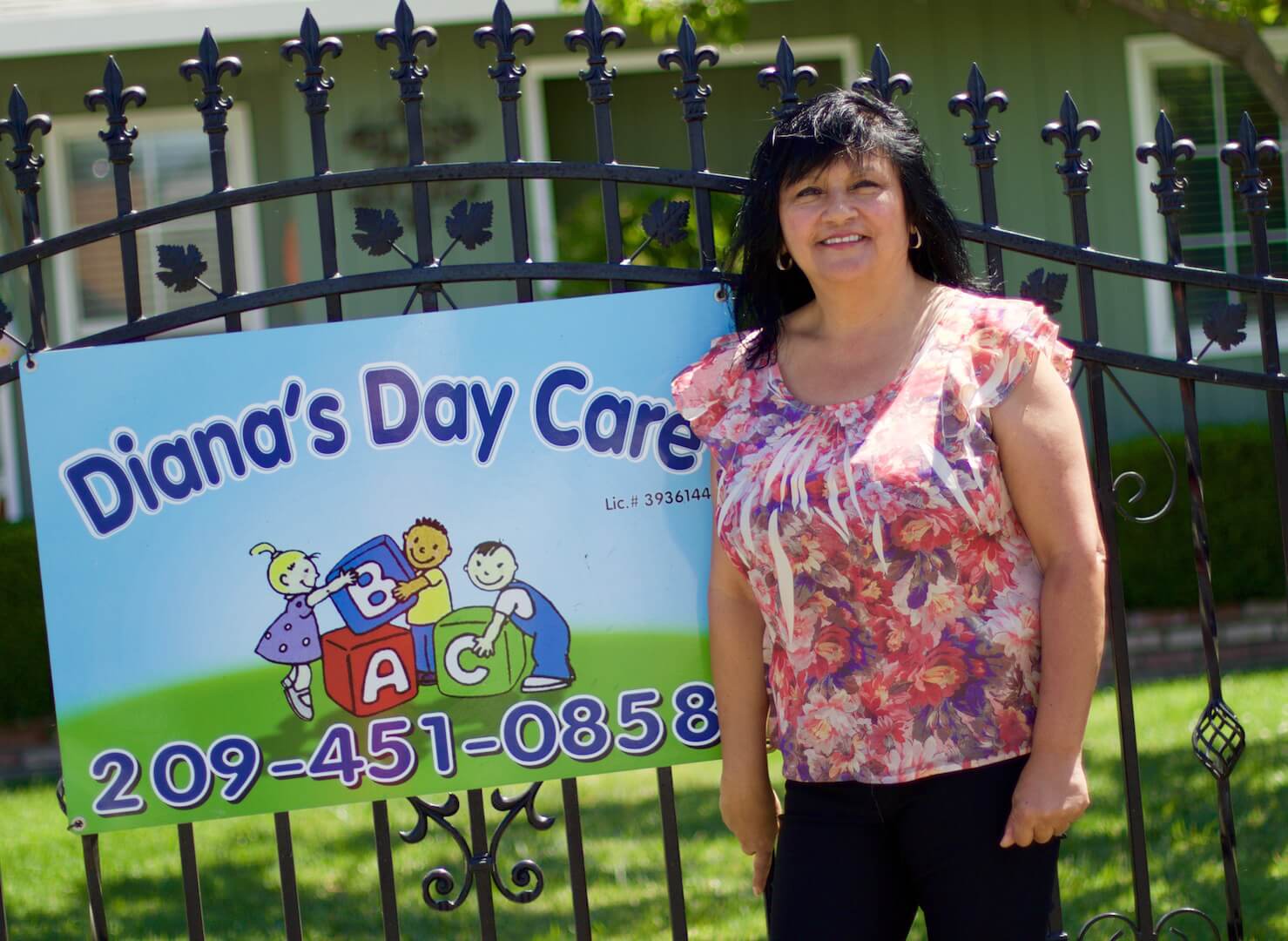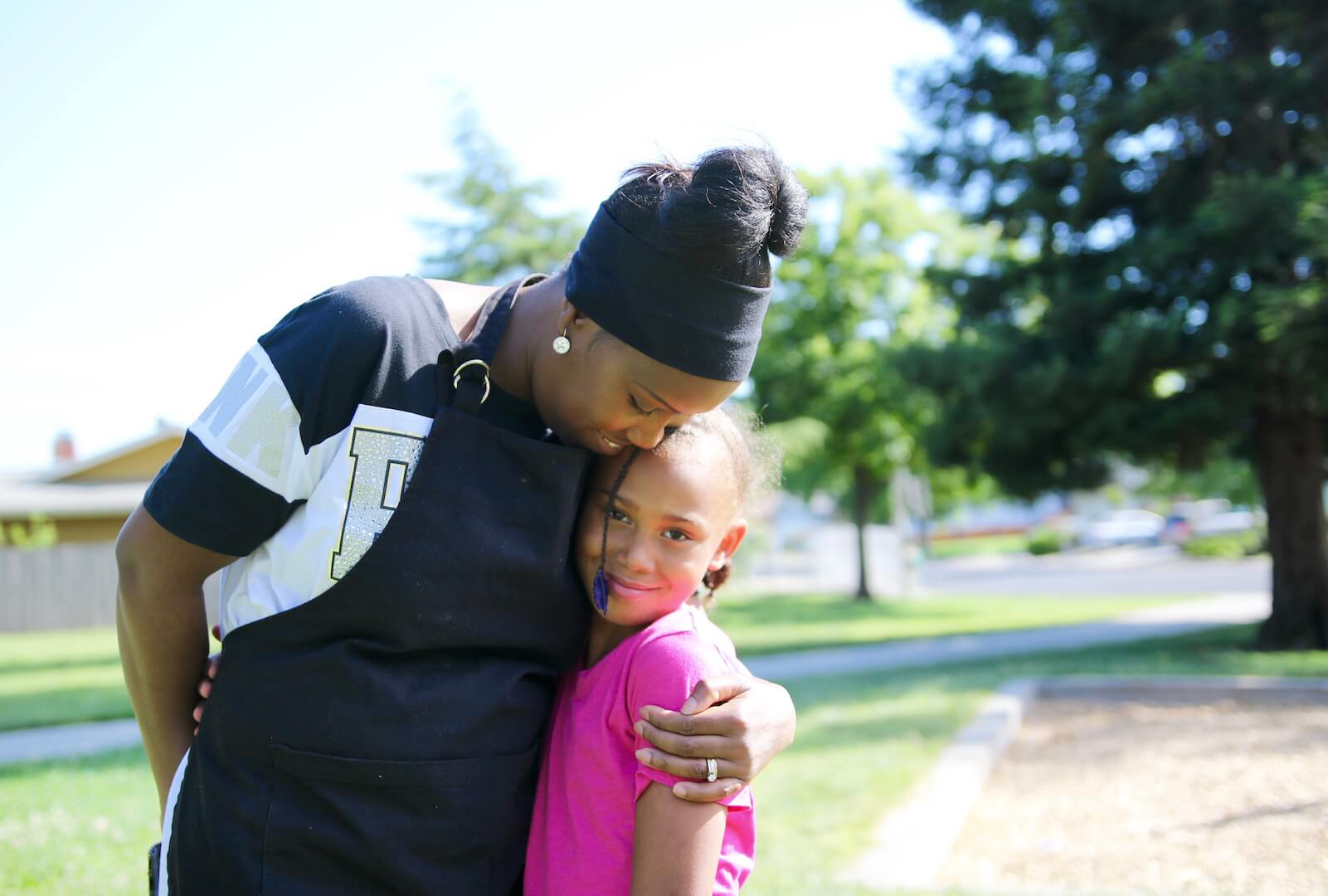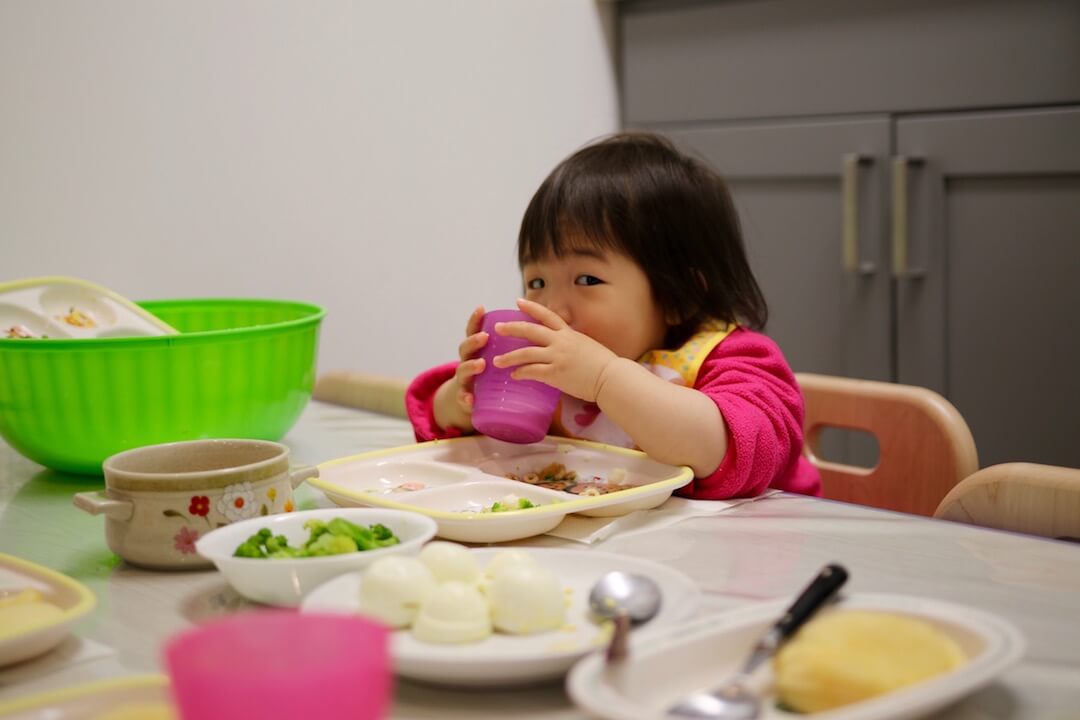Child and anti-hunger advocates are fighting to #FundFoodWithCare by asking policymakers to increase funding for serving healthy meals in child care to children from low-income families. Read on to learn more or click here to see how you can support the campaign.
Diana Quiroga is proud of her deep roots in Stockton, California. “I have lived here all my life. People say that Stockton is the worst place to live. There are stories of violence everyday. But one of the most beautiful things about Stockton is our children,” she shares. Quiroga runs a daycare center called Diana’s Daycare in East Stockton, a largely Black and Hispanic neighborhood. “Most of the children in my daycare are from low-income families of single parents,” she says. Quiroga observes that her daycare is the best bet for many children to eat healthy, nutritious meals during the week.
In 2012, Stockton gained notoriety for being the largest city in the nation to declare bankruptcy. Child care providers, like Quiroga, witness everyday how the soaring cost of living in the San Francisco Bay Area and in cities, like Stockton, hinders access to healthy meals for young children. “Most parents here are low income. When they drop their kids in the morning, they might have eaten a candy or a cupcake. I encourage them to eat fruits and vegetables, and now the kids are educating their parents about healthy eating,” she declares proudly. Quiroga joined the Child and Adult Care Food Program (CACFP), a federal program that provides financial aid to child and adult care centers and institutions to access nutritious foods for their healthy development. For decades, California supplemented the costs of serving healthy meals to children from low income families in child care. In 2012 following the recession, California reneged the funding. Over 20,000 children lost access to healthy meals through the CACFP program.
“Young children need healthy food to grow and develop. It’s the most foundational element for caring for a child,” said Elyse Homel Vitale, senior advocate for nutrition at California Food Policy Advocates. As a response to these cuts, CFPA launched the #FundFoodWithCare campaign to restore access to healthy food for low-income children, setting 23 cents for every breakfast and lunch served to children through CACFP. “Nearly 90% of children who participate in this program are from low income families. This relatively small increase in the state budget will make a difference to the budget of child care providers,” said Vitale.
Ngtsang Shiu Kuen concurs. A child care provider in San Francisco, Kuen believes that the increase in reimbursement would empower her to provide healthier organic options for children in her daycare. “The cost of food is very high. If we had more funding, we could buy more organic options for the children. We do our best to encourage the children to eat a variety of fruits and vegetables,” she said.
“The supplemental reimbursement is really important. Since California cut it, we have seen a decline in participation in the food programs. Especially in San Francisco, we have been hit really hard by the increase of housing and food costs. For child providers to still offer high quality food, they depend on the reimbursements to pay for it,” said Franny Wong, a health and nutrition manager at Children’s Council in San Francisco, a nonprofit that connects families with child care that meets their needs. Children’s Council also trains child care providers to serve nutritious meals to children and educate them on the CACFP program.
“We must step up for our children and give them the best child care. I know I am making a difference in the lives of these kids. I would like to tell my representative in the name of our children, please don’t forget they need good nutrition. If we don’t start now, the obesity problem will not be overcome,” said Quiroga.
For decades, California supplemented the cost of serving healthy meals to low-income children in child care. But in 2012, following the recession, the funding was cut and thousands of children lost access.
“Nutrition is an essential part of early child development. Following California’s budget cuts, nearly 20,000 children lost access to healthy meals when reimbursements were cut to supplement the Child and Adult Care Food Program,” said Elyse Homel Vitale, Senior Advocate for California Food Policy Advocates.
This photo was taken by 7 year old Jeremy Moore at Larranza Crump’s family child care home.
“The food reimbursements are important for all working class families, who have a hard time to pay their mortgage or rent as well as other bills, like child care and feed their children on a daily basis,” said Larrandza Crump, a child care provider in Stockton.
“Many families are struggling with the high cost of living in San Francisco. Yet the reimbursement is the same for child care providers in San Francisco and Montana,” said Franny Wong, the Health and Nutrition Manager at Children’s Council.
“California has the opportunity to help restore access to healthy meals in child care for thousands of children, while also supporting the financial viability of the child care workforce by fully restoring the state supplemental meal reimbursement for CACFP,” said Melissa Cannon, Policy Advocate at California Food Policy Advocates.
“Hunger cuts across age, race and households. In San Francisco, where families have to pay high rent to have a roof over their heads, parents will pay for that first and then food is next. And so they may get the cheapest food or frozen food,” said Carmen Chan, a Health and Nutrition Specialist at Children’s Council San Francisco.
“My family and I spend a lot of money on food for child care instead of equipment, even something as small as crayons. I would rather get healthy nutritious meals for the kids. It’s more important for them to have apples or bananas,” said Larrandza Crump.
Child care providers, like Quiroga, who participate in the food program receive intensive trainings on providing nutritious, well-balanced meals to young children. “I have many young single mothers who send their children to the daycare. I know they are struggling and many were raised eating fast foods. We do our best to educate parents as well on eating healthy foods,” said Quiroga.
“By allocating $16.7 million for serving healthy meals in child care in the 2018-2019 budget, California can provide 72 million meals annually to over 200,000 children,” said Cannon of CFPA.
“Child care providers want to do what is best for the children in their care, so when they don’t have adequate funding for food they pull from other parts of their already limited budgets to put food on the table. Not adequately funding food in child care harms our efforts to increase provider rates and adequately fund child care as a whole,” said Vitale.
“I would like to tell my representative, ‘help us to help our children build a strong foundation of what they need to do to take care of their bodies,’” said Quiroga.
Ngtsang Shiu Kuen, a child care provider in San Francisco, has a food garden with kale, beans and strawberries. “As part of the activities, the children water the garden so they can have a connection with fresh vegetables,” she said.
Join us in asking policymakers in Sacramento to #FundFoodWithCare. Learn how to get involved. link
Questions? Contact: Melissa Cannon at 510.433.1122 ext 102


















